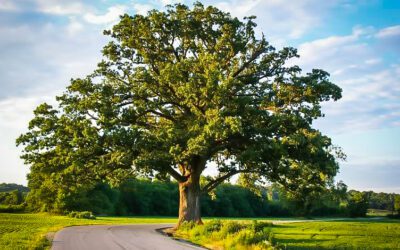Year-round, trees bring a lively aesthetic and a host of benefits to our yards. So, it’s understandable that they take a dormant season in the winter to conserve energy and prepare for spring. They may be just slowing down during this time, but bare branches can also look eerily like a dead tree.
Since winter can be a great time to take care of any problem trees, there a few easy checks you can do to make sure your tree is still in good health. Read on to learn how to tell the difference between a dormant tree and one that is dead or dying.
1. LOOK FOR BUDDING LIFE
Dormant Trees: Get close to your tree and search for small leaf buds at tips of the branches. Yes, even in winter, your tree should still have buds! Branches full of live, pliable buds are preparing to bloom or leaf in spring.
Trees in Trouble: A lack of buds, or buds that are dry and shriveled, can indicate a dead branch. Check a few branches to determine if it has just a dead branch or if the tree as a whole is in trouble. Likewise, if you find dead leaves that hung on well through the fall (depending on the variety), past when they should have dropped, you have another sign of a tree that may be in distress.
2. INSPECT THE TRUNK
Dormant Trees: Living trees have living, healthy bark. Bark is the “skin” of your tree and in a healthy tree is the protective covering that wards off insects and disease.
Trees in trouble: If your tree trunk is missing large chunks of bark, or the bark has lots of insect holes or fungus growing on it, these could be signs of tree decline. Another symptom that arborists look for on a dying tree is cracks in the trunk. If you see any of these warning signs, ask your arborist if the tree is a risk that needs to be removed.
3. PERFORM THE SCRATCH TEST
Dormant Trees: Use your fingertip or a pocketknife to lightly scratch a small spot on one of the tree’s branches. Healthy stems should be moist and bright green or greenish-white on the inside.
Trees in trouble: If you see a brittle, brown layer when you scratch the branch, you’ve got a problem. Repeat this test on a couple of branches. While you’re at it, try carefully bending a branch. If they easily snap, they’re dead.
NEXT STEPS
So, what do you do if you determine that your tree is still alive but suffering? A plant that has sentimental value to you or is an expensive or rare specimen may be worth saving! If the roots are still viable, pruning your tree may give it the help it needs. However, a proper diagnosis of the problem is key.
If you’re positive that your tree is dead, it’s important to remove it immediately. Dead or dying trees are hazardous because they are prone to falling over on a house or other object. They also bring in secondary invaders (pests or disease), which make the surrounding trees more prone to infestation and infection.



